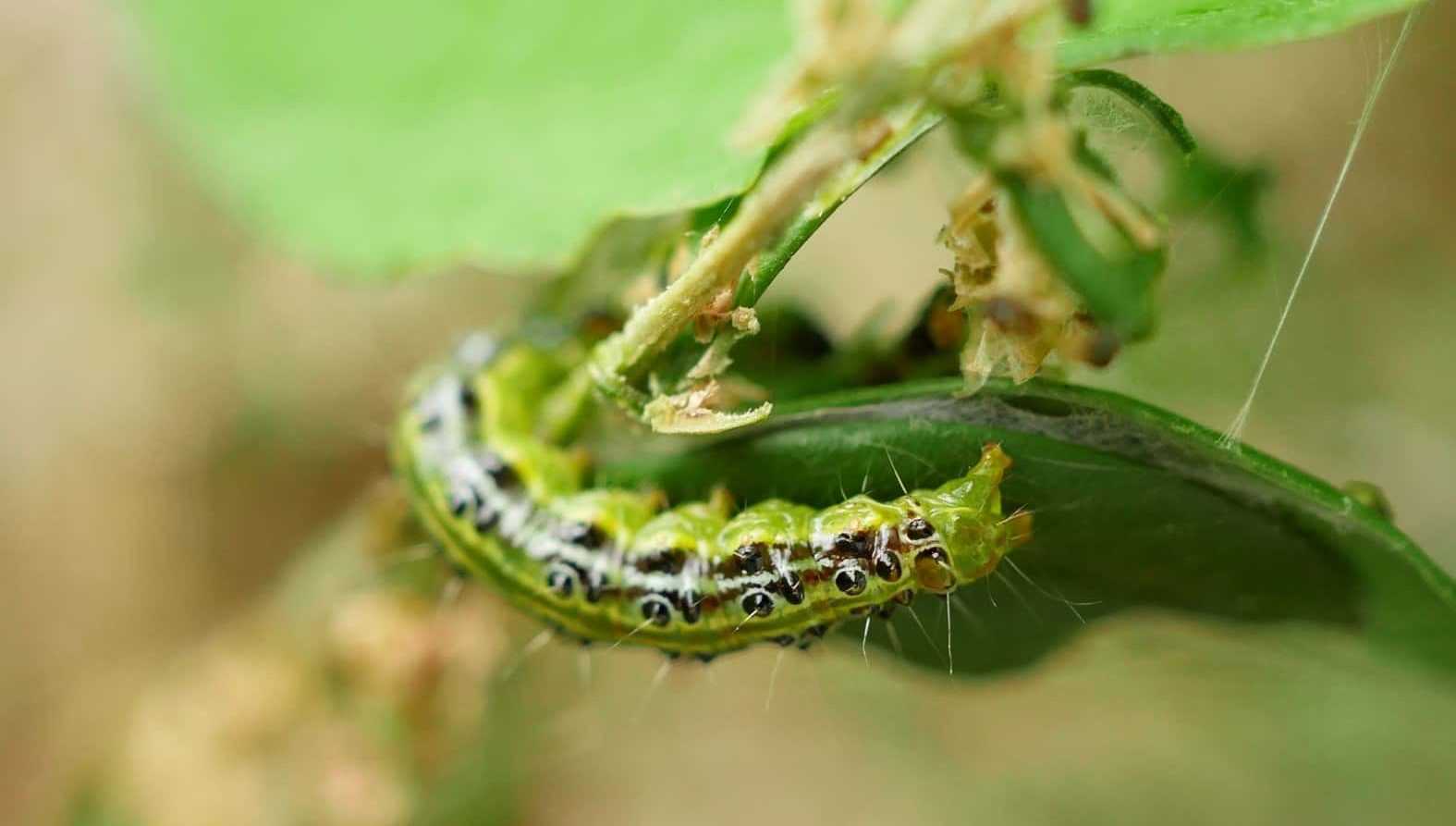
How to Identify and Treat Box Tree Moth: A Complete Guide
Natural and effective solutions to combat box tree moth in your garden
Contents
The box tree moth, larva of the butterfly Cydalima perspectalis, is a dreaded pest native to Asia. It attacks the leaf and bark of box trees, posing a serious risk to French gardens and natural ecosystems in Western Europe. Natural treatment methods such as Bacillus thuringiensis and essential oils offer solutions for combating this scourge.
Identifying the symptoms of box tree moth infestation
The first signs of a box tree moth infestation are often the bristle threads around boxwoods and the numerous dark green droppings around the bushes. The caterpillars are more easily spotted in the lower parts and the centre of infested plants.
Boxwoods are very resilient plants and can regrow leaves, but if the moths attack the bark, it can lead to the death of the bushes.
Unlike other garden pests and except for rare isolated cases, the box tree moth specifically targets boxwoods (particularly Buxus sempervirens and rotundifolia), making pest prevention and bush care all the more crucial.
Read also
Which bushes to replace boxwood?Characteristics and life cycle of the box tree moth
The box tree moth goes through several stages of development, from translucent eggs to light green caterpillars and finally to nocturnal moths. Understanding its life cycle is essential for integrated pest management and responsible gardening.
-
The eggs
The eggs have a translucent appearance, grouped in clusters, and are usually laid on the underside of leaves, making them hard to spot. It takes just a few days for the first caterpillars to appear.
-
The caterpillar (larva)
The caterpillar is recognisable by its shiny black head and light green body edged with dark green longitudinal lines, black warts, and small white hairs. It has 10 false legs and is not urticating.
-
The pupa (chrysalis)
Once mature, the caterpillars spin a silk cocoon to pupate. The chrysalis forms very quickly. The pupa measures about 2 cm. It is initially green before turning brown at ripeness. The moth emerges within a few weeks, or even just a few days in summer.
-
The adult (moth)
These are nocturnal moths. There are two forms of box tree moths: one has pearly white wings edged with a brown band with gold and purple iridescence. The other, rarer form has entirely brown wings. Both forms can still be identified by a small white crescent moon on their wings. Their wingspan ranges between 35 and 44 mm. A female lives about 15 days but can lay hundreds of eggs during her short life. The moths are strongly attracted to light, and their swarming is also problematic—some homes are literally invaded.
Photo credits of the different biological stages of the box tree moth: ephytia.inra.fr
Discover other Buxus - Boxwood
View all →Available in 1 sizes
Available in 1 sizes
Available in 1 sizes
Available in 4 sizes
Available in 2 sizes
Available in 1 sizes
Available in 1 sizes

Available in 4 sizes
Understanding the complete life cycle of the box tree moth
The caterpillars spend winter in silk cocoons well camouflaged between two boxwood leaves.
From February onwards, the caterpillars emerge from hibernation and begin nibbling on the leaves. Their development is rapid. Between late March and early April, the caterpillars become pupae then between late May and early June, the first generation of moths appears.
These adults mate and then lay eggs which will become the individuals of the second generation and so on.
The adults continue mating throughout summer and autumn and thus several generations of moths emerge. The young caterpillars of the final generation spend winter in silk cocoons and the cycle begins anew.
This will allow readers to quickly grasp the key stages in the box tree moth’s life cycle and the important periods for managing this pest.
Throughout the year, several generations can be observed (2-3 per year) with all life cycle stages visible simultaneously: eggs, caterpillars, pupae, moths.
Effective methods to combat box tree moth
For those who prioritise sustainable gardening and organic solutions, several methods can be effective. Bacillus thuringiensis is a natural insecticidal that can be used as part of organic pest control against this caterpillar. Additionally, pheromone traps can help reduce the box tree moth population in your garden.
-
Mechanical Control
At the first sign of caterpillars, remove them by hand. The caterpillars are not urticating.
Brush the boxwoods to remove as many bristle threads as possible.
Resourceful gardeners spread a cloth beneath the plants and tap the boxwoods with a stick to dislodge the caterpillars onto the fabric. Then simply collect and crush them. This method makes gathering less tedious when dealing with large boxwoods or topiaries.
-
The Bowl Trap Method
A large bowl (or several) filled with water and washing-up liquid, illuminated at night, proves effective for trapping moths which drown there. However, if they are very numerous, the bowl fills quickly and needs emptying daily before repeating the process.
Also worth discovering is the vacuum cleaner technique…
-
Alternative Treatments and Effectiveness Against Box Tree Moth
Although black soap and white vinegar are often cited as organic treatments, their effectiveness hasn’t been scientifically proven. For more reliable garden protection, we recommend following proven methods and promoting garden biodiversity to create ecological balance.
Biological control and organic treatments against box tree moth
Biocontrol is defined as a set of protection methods using only living organisms or natural substances such as predators, Bacillus thuringiensis or pheromones. Several research projects are underway at INRA to find solutions to curb the phenomenon. The latest study concerns the insufficient effectiveness of trichogramma.
-
Predators
In its native region, the box tree moth is regulated by natural predators. Here, these predators are absent. Predation by great tits and house sparrows has nevertheless been observed, as well as by the Asian hornet (Vespa velutina).
Installing nest boxes facilitates the nesting of birds that will help regulate box tree moths. Allow for 10 to 20 nest boxes per hectare. It is essential to comb the boxwoods to remove the bristle and facilitate predation.
INRA is conducting studies using egg-parasitoid micro-wasps: trichogramma, whose females lay their eggs inside the eggs of box tree moths, causing their death.
-
Treatment with Bacillus thuringiensis
Repeated treatments with Bacillus thuringiensis (Bacillus thuringiensisssp kurstaki or BTK or simply BT) are effective but only on young caterpillars.
Older ones resist the treatment. Bacillus thuringiensis is a bacterium naturally present in nature. This bacterium attacks the intestinal wall of caterpillars. They stop feeding and die quickly, within 1 to 5 days, from septicaemia.
The treatment is applied to the entire foliage with a sprayer. Its duration of action is 3 to 7 days maximum. It is essential to treat when the caterpillars are present and to combine the treatment with trapping the moths.
To treat your boxwoods:
Start by removing the bristle threads that often surround the attacked branches, then treat as soon as possible, on young caterpillars with BT, preferably in the evening or early morning. Repeat the treatment two to three times, at 3-week intervals, to destroy the different generations of young caterpillars. BT is only active on young caterpillars that feed heavily. Older caterpillars, at the end of their cycle, are less affected as they stop feeding. Intervene again in summer and autumn if new generations of caterpillars appear.
After a first attack and treatment, water the boxwoods well to stimulate the regrowth of new leaves.
→ Also read Bacillus thuringiensis: a natural insecticide
-
The pheromone trap or Buxatrap
Pheromones are sexual substances produced by female insects to attract males. INRA, as part of the “SaveBuxus” programme, has developed and patented a pheromone trap called BUXatrap. The pheromones attract male moths into the traps. It is not a miracle solution but it helps, combined with other control methods, to limit the invasion.
Each species emits a specific pheromone. It is therefore necessary to install one trap per type of pest, in this case, for the box tree moth. These traps are used as a warning system to determine the start and extent of the presence of these pests. Each capsule must be changed every 4 weeks.
By increasing the number of traps, it is possible to slightly reduce the number of males, fertilised females, eggs laid and contaminated boxwoods. However, the cost of these interventions then becomes very expensive.
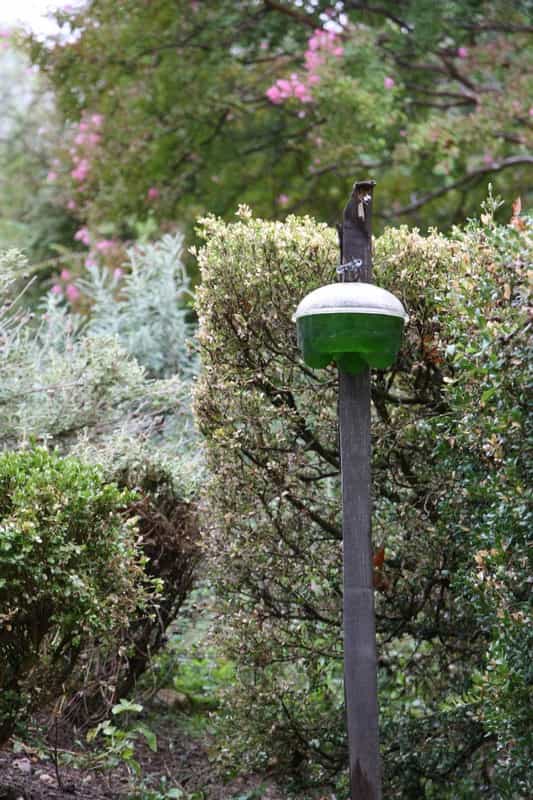
One of the pheromone traps installed in the Harmas of Jean Henri Fabre in Sérignan-du-Comtat.
To know the periods of pest presence in the garden, it is best to regularly read the Plant Health Bulletins (BSV). Fed by a network of professional and volunteer observers, the BSV provides information on the importance of problems (diseases, pests) in each region and for each type of crop. It is a valuable aid for observing problems in your garden and triggering, if necessary, the appropriate preventive and curative interventions.
Tip: to consult the BSV, simply type “Plant Health Bulletin” followed by the name of your region into your search engine.
Finally, discover our advice sheet dedicated to pheromone traps.
Prevention Strategies Against Box Tree Moth Attacks
Prevention is jointed around three axis:
- From March onwards, remove and burn the caterpillars and chrysalises present on box bushes to limit the appearance of the first caterpillars;
- If the box bushes die, cut them down and burn the above-ground parts;
- Avoid planting box bushes and do not replace them with new ones. Choosing resistant plants and diversifying pruned hedges can also contribute to ecological gardening.
Note that an alternative would be to replace box bushes with other essential oils of plants ignored by the box tree moth. Discover our selection of potential candidates in our advice sheet: “Box, what to replace them with?“.
Also watch Olivier’s video on: alternatives to box.
To find out more
- Subscribe!
- Contents


































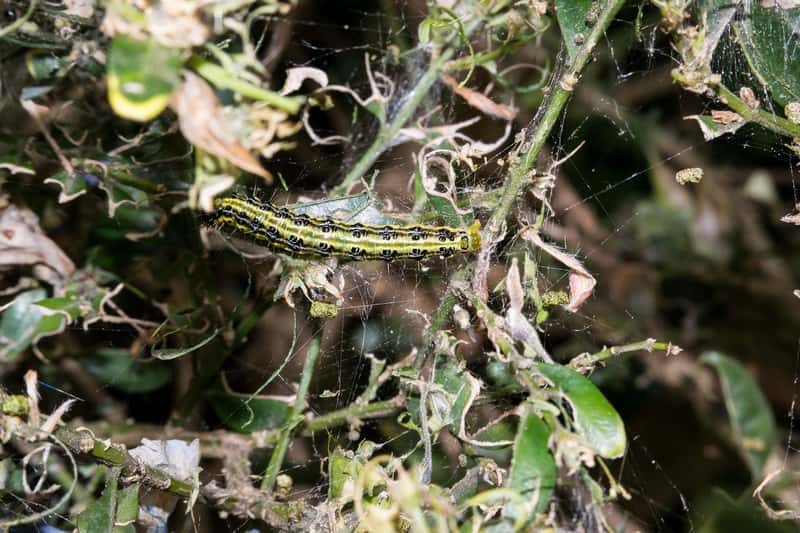
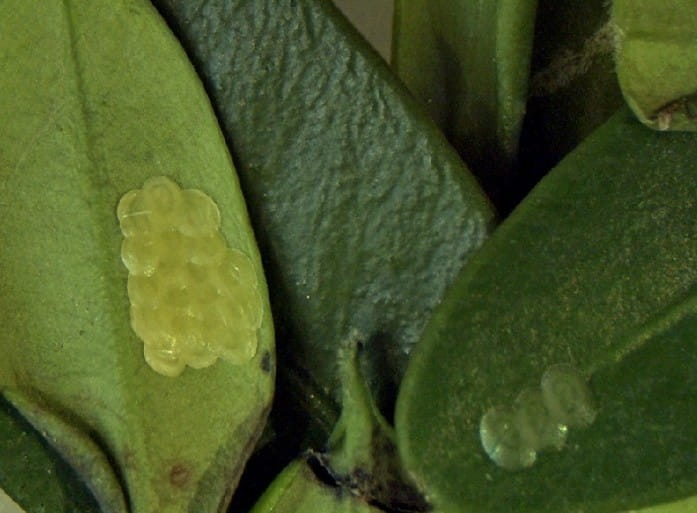
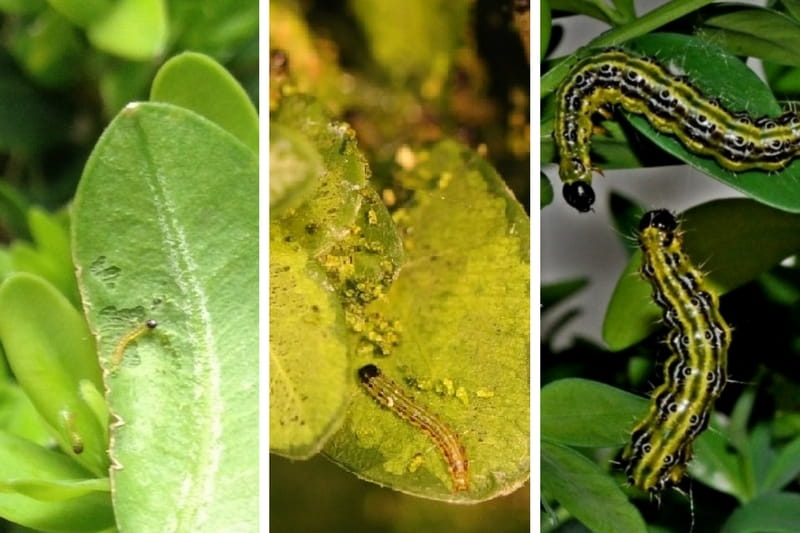
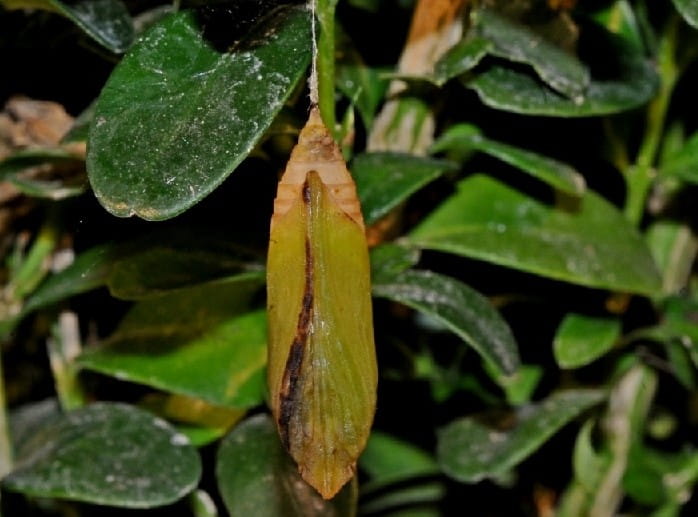
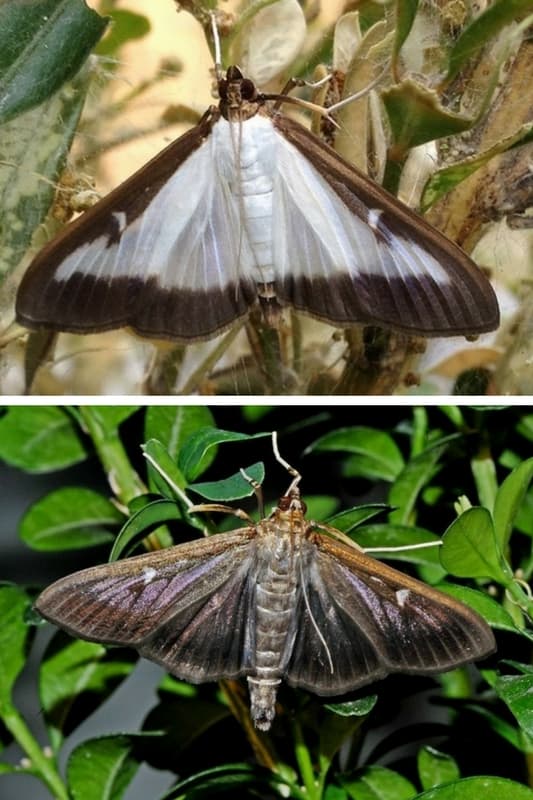

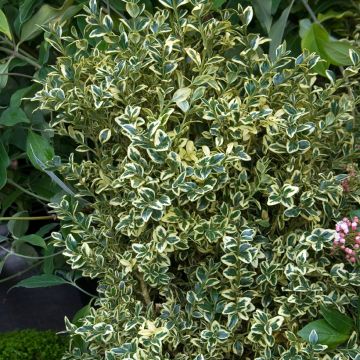





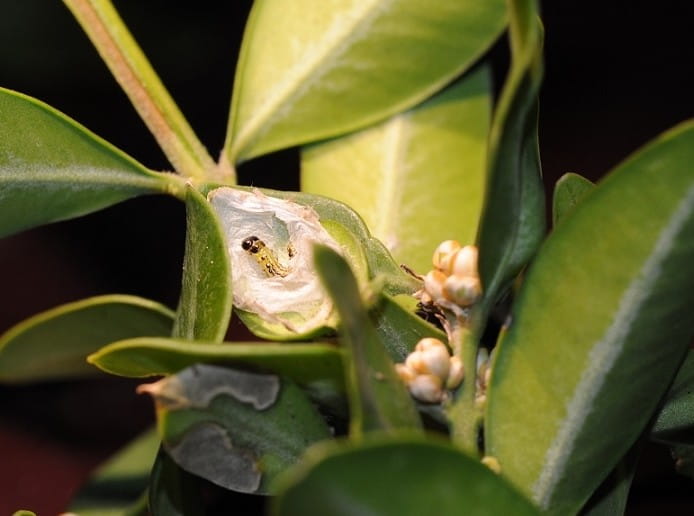
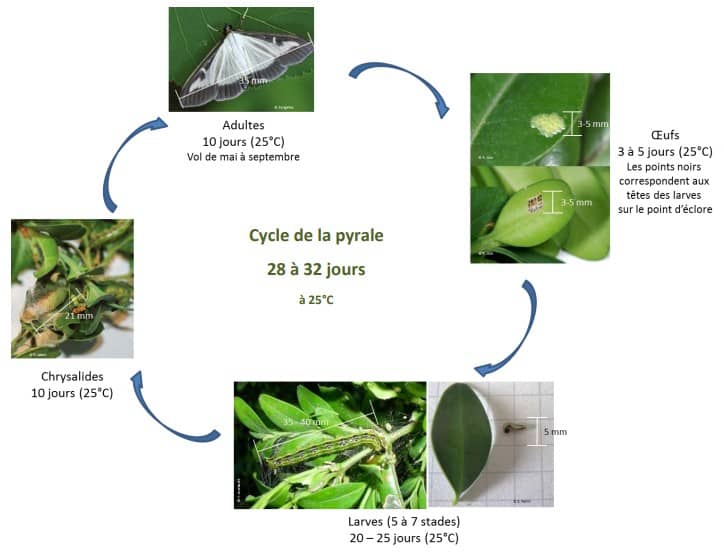
Comments